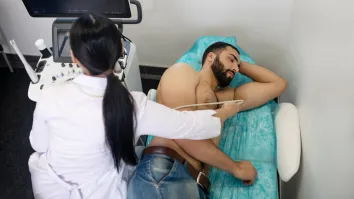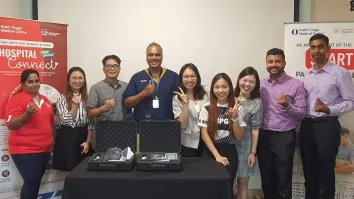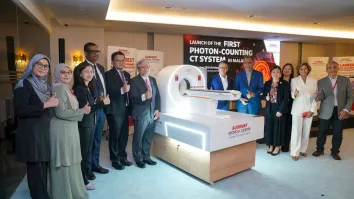
Generic medications and Asia-Pacific health systems: A viable win-win-win strategy?
This article explains in greater detail the challenges faced by the generic drug manufacturing industry.
BY CHRIS HARDESTY
Despite the various structural and cultural differences in the design of health systems across the Asia-Pacific, there is one noticeable recurring theme that has taken a stronghold in the recent years – incentives at all levels to make greater use of generic medications so as to achieve cost optimisation targets, in line with a nearer-term “do more with less” mentality.
Clear targets for generic drug prescriptions are stated in nearly every nation’s strategic plan for the sector, and the result has been a meteoric rise in the region to the point that such prescriptions typically now represent more than 70% of total. And there is likely still more to come given the growth in anticipated exclusivity expirations on the horizon. If nothing else, the result certainly proves that health system reform ambitions, underpinned by aligned KPIs across multi-stakeholder groups, can function to make a difference.
Yet there is a question here of sustainability. Not just for the health system itself to rely on off-patent technologies as fuel for financial reserve needs, but also for the drug industry (innovative as well as generic) to continue to roll onward with such cash pressures, particularly as payment terms become extended. We have previously advocated for governments in the Asia-Pacific to evolve from a strategy of “triple aim” (simultaneous balancing of the access, quality, and cost axioms of healthcare), to one of a “triple win” in which universal healthcare coverage goals are achieved through proper industry creation
While the rise in the use of generic medications is admirable, we’re not convinced that a sole focus on the current approach will ultimately serve the triple win vision required to deliver evolved health systems.
This article explains in greater detail the challenges faced by the generic drug manufacturing industry, and therefore considerations for Asia-Pacific country leaders as they re-set their health reform ambitions in the post-pandemic era. There remains a great opportunity to leverage the off-patent trend, through a proper collective effort.
So what does the market actually look like?
Note that this article speaks holistically about the generic drug industry though, like any, there are many sub classifications underneath. For example, in most markets local companies are increasingly specialised in providing off-patent versions of critical medications for intra consumption. Then there are of course the legacy multinational pharmaceutical players that maintain a portfolio of established products due to their inherent brand and cash value. And following this is a spaghetti web mix of partnerships, outsourcing, licensing, and other collaboration arrangements in the middle for regional and global expansion of import/export opportunities.
On the face of it, there is great attractiveness for the generic drug industry. As mentioned, governments in the Asia-Pacific have placed a keen focus on increasing the procurement of medications at more affordable prices, even if this means sourcing from non-traditional suppliers. Japan, for example with a historically low rate of generic drug usage, saw penetration rise from 30% to 68% over the last decade, with an ambition to reach 80%.
However, growth rates are slowing and the economics are beginning to deteriorate (we will revisit profitability a bit later). Procurement groups are consolidating along with “value-based” healthcare reform initiatives, exerting significant pressure on top-line price points.
Such a scenario leaves generic drug companies facing limited power (especially in larger markets) compounded by increasing levels of competition. Previously we would find that generic medications entering the market can obtain a price point up to 90% of the branded version; yet in modern times this figure is more like 20% (or less). To remain viable, many of the players outsource their own operations, like manufacturing, to lower-cost territories. Yet, these same territories have now built their own generic drug capabilities too. China and India alone represent more than 50% of new drug applications to the US FDA, creating further industry pressure and price erosion contradictions.
It is important for health system leaders to balance cost savings ambitions with the risks involved. The markets where a majority of the generic drug manufacturing is taking place also represent 49% of US FDA warning letters and 64% of EMA compliance notices, due to quality concerns.
And what does this state of affairs mean for the industry ecosystem?
Every action causes a reaction, and this is certainly true for the generic drug industry. In the face of the aforementioned pricing pressures (driven by insatiable health system cost savings targets), manufacturers are increasingly opting to discontinue product lines. This, in turn, can lead to insufficient supplies vis-à-vis patient demand. In July 2019, for example, Teva stopped production of the pediatric oncology drug Vincristine due to low profitability, leading to a drug shortages. So rather than building a shared industry around critical medications, overly-radical country reform efforts are failing to achieve the “triple win” vision.
In the end, like any business venture (even those with social missions), there must be profitability in order to achieve sustainable growth and re-investment. While the demand volume for medications continues to increase, albeit more slowly, the pricing pressures are stifling innovation in products but also in business model. Flooded markets and fast-track approvals, in addition to the regulatory and procurement overhauls, are demonstrating their impacts through profitability erosion. Lack of supply and greater risk are almost certainly the anticipated result.
The generic drug industry is then stuck between a rock and a hard place. Continue to invest in cost optimisation programmes that are aligned with health system reform ambitions, albeit short-lived. Or exit into new ventures with greater profitability and longer-term sustainability. The reality, however, is that the answer is not a binary one. Let’s explore the creative solutions that make the best of the public-private collaboration opportunities.
“I believe the generic drug industry will continue to evolve dramatically in the coming years,” says Thomas Runkel, former Asia Head at the likes of Actavis, Accord Healthcare, and Glenmark Pharmaceuticals. “Consolidation, more focus on specialty pathways, and tackling the ‘difficult-to-replicate’ technologies are all in view for the generic drug companies. Including the combination of strategies therein.”
Actions needed in the Asia-Pacific to progress forward
As alluded to at the beginning of this article, the generic drug industry is actually comprised of sub-components that offer a range of innovation tactics. There must be a similar level of creativity by country leaders in the way in which “triple win” programmes are more effectively utilised to achieve the grander vision. We provide three strategies here – allowing consolidation, supporting specialty generics, and getting into the biosimilars game.
There is a tendency in any industry, and rightfully so, for governments to intervene against monopolistic behaviours. While such policy must be maintained, there should also be recognition for when consolidation can be fostered so as to eliminate unnecessary competition and, ultimately, benefit the patients in need. The generic drug industry is ready for such cross-border consolidations to occur, given the previously mentioned pressures.
Re-balanced competition, adequate supply, improved quality, and volume-friendly deals will be the result. And we are starting to see this play out, such as the merger of Mylan and Pfizer’s Upjohn division, the combined entity known as Viatris, which is now the largest generic drug manufacturer in the world across 51 production facilities and with access to 165 markets. Such a deal allows for greater branded versus generic separation focus by the players involved, freeing up capital for innovation reinvestment and wider international expansion. The Mylan-Upjohn merger even led to the divestment of certain products, thereby allowing other players, such as the local ones in-market, to pick up new assets and to expand their own portfolios. A win-win-win.
Greater consolidation can also lead to cost reductions (i.e. improved profitability) by eliminating value chain wastage in the system. Forward integration, such as manufacturer + distributor, and backward integration, such as manufacturer + Active Pharmaceutical Ingredient (API) supplier, improves dependency mitigation, supply security, revenue streams, and visibility. Especially during times of volatility, as we’ve observed during the COVID-19 pandemic. Even the increasingly common Direct-To-Customer (DTC) approach, leveraging on the wave of digital tooling and 3D printing possibilities, serves to be powerful for those off-patent products with inherent brand recognition in the market.
One clear way out of the legacy generic drug profitability trap, is to move into higher-value activities. Rather than focusing purely on identical copies of off-patent products or small indication tweaks therein, countries can instead create an industry around generic drug innovation. This benefits the “triple win” ecosystem mindset, as well as the patients involved who demand more tailored solutions, albeit still cost-effective, for their needs.
The definition of a specialty generic is still evolving, though typically refers to a drug that maintains a certain level of complexity in terms of active ingredients (e.g. peptides and polymeric compounds), formulations (e.g. liposomes and colloids), route of delivery (e.g. dermatological and ophthalmological), and dosage form (e.g. transdermal and extended-release injectables). The specialty generic drug segment is expected to see a 12.1% CAGR through 2024. What’s more, due to the level of re-investment and innovation required as compared to standard generic drugs, specialty generics are able to treat the likes of rare disease as well as cancer, multiple sclerosis, and HIV. In other words, high unmet need areas for Asia-Pacific populations.
Penetration of specialty generics is already on the rise in the region, so country leaders are encouraged to support the fostering of such an industry, in the right, balanced way. Friendly competition, upskilling requirements, ecosystem partnerships, and import/export conditions will be needed to create the right environment for growth. And moreover, as compared to the pressures exerted on the generic drug industry in the recent years, leaders should recognise that sustainable profitability for innovation and reinvestment is a win-win-win tool.
Strategies 1 and 2 are nearer term in the sense that they require relatively less pivoting and/or are anyway already in flight. Strategy 3 is also not totally new either, though it remains in its infancy and dictates much greater resource commitments to sufficiently scale up. We call on Asia Pacific country leaders to place greater emphasis on the biological topic, especially given that this is the direction of travel in broad-scale medicine anyway.
Biosimilars are like a generic drug version of a biological product that is already approved by regulators; in other words, there should be no clinically meaningful difference in safety, purity, and effectiveness. Some markets, like Europe and Japan, are surging ahead in the biosimilars field. Others, lacking proper investment in this space, face lingering challenges related to costly manufacturing (or importing), patent litigations due to not only product but also process protection, and access to novel biological development such next-gen gene therapies. In reality, just like branded and generic versions of traditional drugs, the biological and biosimilar industries can co-exist with proper supportive infrastructure. Teva, for example, now has a split pipeline.
Nearly 30 biologics are expected to lose their exclusivity over the next decade, including the likes of Humira and Lucentis. Failure to have an adequate country plan now for biosimilars, will lead to a falling behind and untapped potential for broader health system reform ambitions. The US FDA and EMA have issued recent interchangeability guidelines so as to encourage pharmacy substitutions for increased biosimilar formulary placements.
Proper treatment of the generic drug industry, with its various sub-classifications and innovation concepts, can align well to Asia-Pacific health reform programmes that seek to “do more with less”. However, the risk of overemphasis on the “triple aim”, rather than enabling a “triple win” environment, could unravel the progress made and potentially even revert backwards on socioeconomic achievements due to supply shortages and quality concerns, thereby affecting the patient populations.
Country leaders must recognise that healthcare missions should be empowered with appropriate profitability too. This is how public-private win-win win ecosystems are built for sustainability.
“Execution by all parties is key, in managing an effective generic drug industry,” says Runkel. “Stakeholders must collaborate together to foresee the market trends coming, and to adapt accordingly.”



















 Advertise
Advertise





